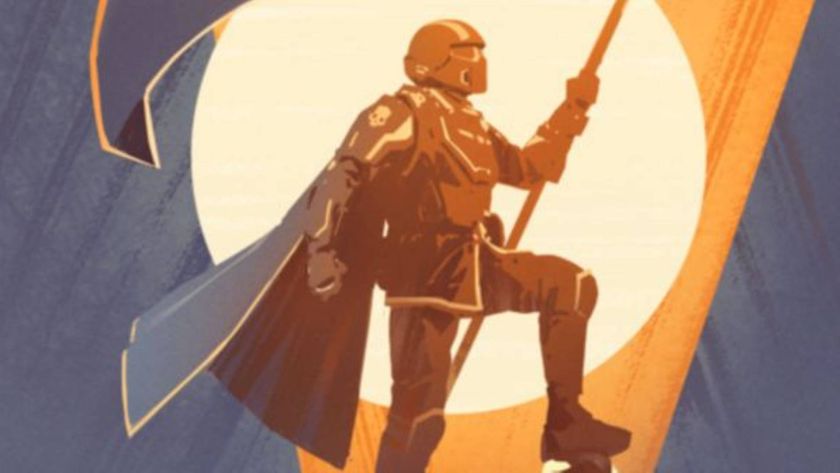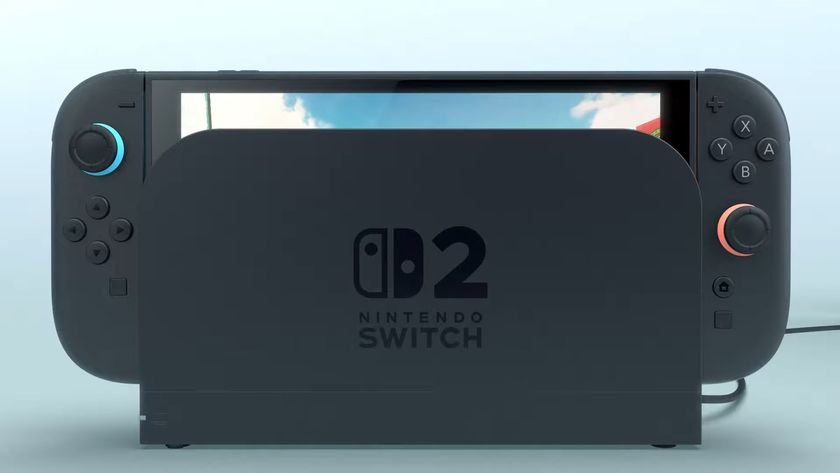SSD vs HDD - What does switching to SDD mean for next-gen gaming?
The PS5 and Xbox Series X both pack an SSD, but what does that really mean for us?

The next-gen consoles will use SSD technology rather than a hard drive (HDD) to store your game installs. What is the main difference between SSD vs HDD? That is easy. An SSD, a solid state drive, is much faster.
It allows game data to be loaded more quickly, which has a huge effect on load times. But there is a little more to it than that, particularly if you really want to know how the Xbox Series X and PS5 will use this technology, and how it may affect games in the future.
SSD vs HDD - Real world benefits you can see today

Sony has confirmed the PS5 will use SSD storage. Microsoft has done the same for the Xbox Series X.
But you can already get a taste for benefits of SSD speed today. Plug an external SSD into an Xbox One, from the original to the Xbox One X, and you can use it to install game data.
PS4s can too, but we tried it out with an Xbox One to see the difference it makes. Prey’s initial load took between 53 seconds and 1minute 13 seconds through a hard drive, and 37 seconds when shifted to an SSD.
Loading a save game dropped from 15-19 seconds to six seconds. You get to cut load times in half using an SSD simply plugged into one of your console’s USB slots.
We saw similar improvements in GTA 5. From dashboard to seeing the back of Trevor Phillips’s balding head took 2 minutes 9 seconds with an HDD, or 1 minute 19 seconds with an SSD.
Sign up to the 12DOVE Newsletter
Weekly digests, tales from the communities you love, and more
Next-gen SSD speed

We said we were just out to “give you a taste” of the SSD life, because the solid state drives likely to be used in the Xbox Series X and PS5 are in a completely different class.
Our test SSD has a SATA interface and plugs into your Xbox One over USB 3.0. SATA’s bandwidth limits the theoretical maximum data transfer speeds to 750MB/s, and USB 3.0 brings this ceiling down to 625MB/s.
Real-world speeds of our WD Wireless SSD are much lower too, at around 380-390MB/s. That is around four times faster than the 100MB/s you’ll see from the 5400rpm hard drive used in all current Xbox consoles.
However, the SSDs of the next-gen consoles will be closer in performance to those found in Apple’s MacBooks.

PS5 vs Xbox Series X - What's happening in the next-gen consoles
Recent leaks suggest the Xbox Series X SSD will be capable of speeds up to 3.75GB/s. That’s ten times faster than the best-case performance of our test SSD, and or 37 times faster than a regular Xbox One hard drive.
We also have reason to believe the PS5 SSD may be even quicker than that of the Xbox Series X. Some rumours suggest it will use a higher-end “controller” to achieve speeds much closer to the 7.5GB/s maximums of the PCIe Nvme 4.0 core SSD hardware both consoles are likely to use.
And by “controller”, we do not mean a gamepad, obviously. The two core components of an SSD drive are memory chips and the controller, the latter of which manages the storage and delivery of data on the chips. You can have the quickest memory wafers around, but to make that translate into the quickest real-world results you need an advanced controller.
Best available knowledge suggests Microsoft will take a slight hit to the SSD controller quality in order to keep the console cost down. But other rumours say the Xbox Series X will also have a more powerful graphics processor. The next-gen spec war is far from concluded.
Real-world results: HDD vs SSD

Sony system architect Mark Cerny talked to Wired in August 2019, saying he considers the lightning-fast SSD one of the upcoming console’s main hardware features because it will all-but eradicate load waits.
Load speeds are an easy way to compare generations of SSDs and hard drives. Perhaps the 37 second load time from our testing of Prey installed on a standard external SSD would be cut to under 10 seconds in the PS5. There’s barely time for the game engine title screen.
There is also real potential for the speed of SSDs to be used to alter the way game engines handle the structure of game worlds too. When you play a game on a PS4 Pro or Xbox One X, the textures and other used to render the scene are stored in video RAM. The Pro has 8GB of it, the Xbox One X 12GB.
When a game engine needs to top this up, or load textures from a new world area, it does so from the (ultra) slow hard drive.
The much faster SSD drive of next-gen consoles is likely to be used as an adjunct of video RAM. A portion of the same storage you use to install games ends up ring-fenced as memory for graphics data the console juggles from frame to frame.
This is likely to be a huge part of what will allow game engines to create more detailed worlds, with far more detailed textures . Raw GPU power often gets the credit for changes like this, but this time as the SSD may deserve some credit, where it is effectively used to offset the high cost of RAM.
The PS5 and Xbox One X are likely to use GDDR6 RAM, 16GB of it. Some rumours suggest the PS5 will have 24GB RAM, so an up to 2x increase over the current-gen consoles. But where this is not enough, the SSD can act as a reserve tank. The consoles are likely to need them too as, unlike a PC, RAM is system-wide. In a gaming PC you have normal system RAM and separate video RAM, in the graphics card.
The next consoles, just like today’s, have one mass of RAM optimised for handling graphics.
SSD vs HDD - The mechanics

An SSD is particularly well-suited to this job as a RAM expander because of the way it stores data. A hard drive uses spinning platters, discs that hold your data. In a large, modern hard drive each of these platters might hold 1TB of data. There is a transducer that sits on a mechanical arm just above each surface of these platters, reading the data a little like a needle on a record player.
This means the data is stored sequentially, and is one reason hard drives are so slow. To reach any specific piece of data the arm may have to move to reach it. There may be an index to help matters, but this can seem archaic when we use phones with virtually no moving pieces.
Game developers mitigate this by duplicating parts of game data on the drive, to avoid the hard drive arm darting about as your Xbox One X loads up a new scene’s worth of textures.
As an SSD’s data is stored on chips, its ability to bring up any piece of stored data quickly is radically better than a hard drive’s. This means developers will no longer have to use data duplication techniques, but don’t assume this will also mean smaller installs. They just won’t expand as egregiously as you might guess with a generational shift in graphics.
A hard drive almost starts to look as out of date as the ZX Spectrum’s cassettes when compared to the SSDs of the upcoming consoles.
Let’s end on a bad note
Want the bad news? SSD storage is much cheaper than RAM, but it is still nowhere near as cheap as hard drive space. This is the reason Microsoft and Sony continued to use hard drives in the PS4 Pro and Xbox One X: SSD storage would have dramatically increased their prices, and could effect the PS5 price and Xbox Series X price.
It made sense too, as games for systems were already built with the limitations of hard drive storage in mind. Long load times suck, but you don’t really see major in-game performance changes when you use an SSD with a PS4 or Xbox One.
Most rumours seem to indicate we will have the option of up to 2TB storage for our next consoles. However, the days of small price differences between console capacities is almost certainly over, particularly when the Samsung EVO 980 “PC” SSD drives the console counterparts may be similar to are not even on shelves yet.
For more details on all the next-gen jargon, check out more of our next-gen explainers.
If you're wanting to upgrade your storage options today, we've compared plenty of drives' capability and prices for you already. Our best PS4 external hard drives guide is ideal if PlayStation Plus has your PS4 bursting at the seams. And if Game Pass has your Xbox feeling the strain, then our guide to the best Xbox One external hard drives is the one for you. But if you want a taste of next-gen speed today maybe you should check out our candidates for the title of the best PS4 SSD.
Andrew is a technology journalist with over 10 years of experience. Specializing particularly in mobile and audio tech, Andrew has written for numerous sites and publications, including Stuff, Wired, TrustedReviews, TechRadar, T3, and Wareable.

Helldivers 2 CEO says industry layoffs have seen "very little accountability" from executives who "let go of one third of the company because you made stupid decisions"

"Games that get 19% user score do not generally recover": Helldivers 2 CEO reflects on Arrowhead's "summer of pain" and No Man's Sky-inspired redemption arc











